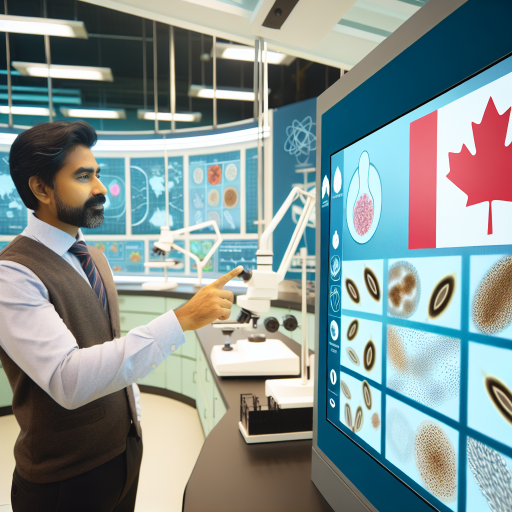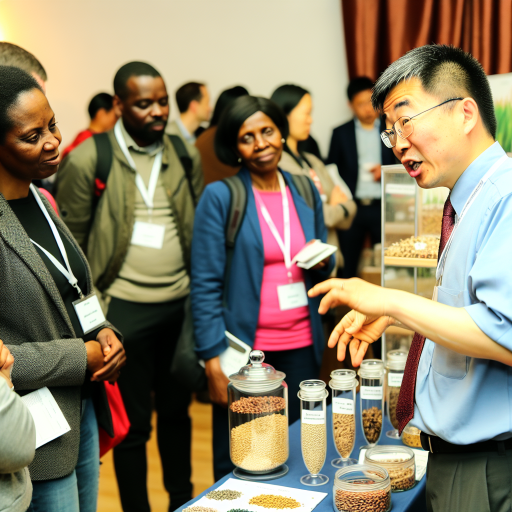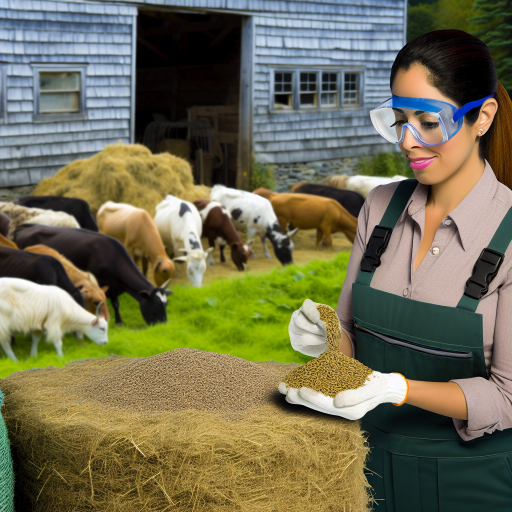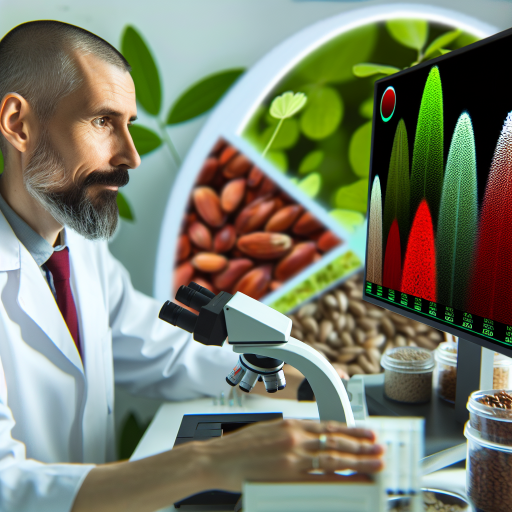Overview of Seed Technology and Its Importance
Seed technology plays a crucial role in agriculture today.
It encompasses the science of seed production and quality assurance.
This field impacts food security and agricultural sustainability significantly.
Significance of Seed Quality
High-quality seeds ensure better crop yields and performance.
Farmers rely on seed technologists to provide superior seed choices.
Proper seed technology enhances resistance to pests and diseases.
Innovation in Seed Production
Advancements in biotechnology have transformed seed technology.
Techniques like genetic modification contribute to improved varieties.
These innovations lead to crops that can thrive in diverse environments.
Role of Seed Technologists
Seed technologists analyze and improve seed traits for market needs.
They conduct experiments to determine optimal growing conditions.
Moreover, they ensure compliance with agricultural regulations.
Impact on Global Agriculture
Seed technology addresses the challenges posed by climate change.
It supports the development of resilient crop varieties worldwide.
Ultimately, this field promotes food security for an increasing population.
Types of Tools Used in Seed Quality Testing
Laboratory Equipment
Laboratory equipment plays a vital role in seed quality testing.
Common tools include seed moisture testers.
These testers measure the moisture content accurately.
Another important device is the seed germinator.
A seed germinator provides controlled conditions for seed sprouting.
Additionally, microscopes are essential for examining seed health.
Field Testing Tools
Field testing tools assess seed performance in actual growing conditions.
One common tool is the seed planter.
Seed planters help ensure proper spacing and planting depth.
Soil testing kits are also crucial for field assessments.
Unlock Your Career Potential
Visualize a clear path to success with our tailored Career Consulting service. Personalized insights in just 1-3 days.
Get StartedThese kits analyze soil health and nutrient levels.
Data Collection Instruments
Data collection instruments track various seed characteristics.
For instance, seed counters accurately count seed numbers.
Balance scales provide precise weight measurements for seed batches.
Additionally, data loggers help in recording environmental conditions.
These instruments enhance the quality of seed testing data.
Quality Control Equipment
Quality control equipment ensures seeds meet industry standards.
Such equipment includes grading machines.
Grading machines separate seeds based on size and weight.
Moreover, cleaning machines remove impurities from seeds.
This ensures that only high-quality seeds are distributed.
Laboratory Equipment for Seed Analysis
Importance of Seed Analysis
Seed analysis plays a crucial role in agriculture.
It ensures the quality and viability of seeds.
Additionally, it helps in assessing genetic purity.
This analysis minimizes risks in crop production.
Essential Laboratory Tools
Seed technologists rely on various laboratory tools.
Each tool serves a specific purpose in analysis.
Seed Germination Test Apparatus
The seed germination test apparatus measures seed viability.
It typically includes petri dishes and filter papers.
These materials provide a controlled environment for seeds.
Technologists monitor germination over several days.
Moisture Content Meter
The moisture content meter helps ensure seed quality.
This tool checks the water content in seeds.
Moisture levels impact seed storage and planting success.
Seed Counting Machine
A seed counting machine simplifies the counting process.
This equipment accurately counts seeds quickly.
It saves time and reduces human error in measurements.
Complementary Equipment
Several complementary equipment types enhance analysis accuracy.
These include tools for advanced testing methods.
Soyl Testing Kits
Soil testing kits assess the growing conditions for seeds.
Evaluating soil health is vital for crop success.
These kits typically test for pH, nutrients, and contaminants.
Microscopes
Microscopes allow for detailed observation of seeds.
They help identify diseases and pest damage.
This analysis aids in selecting high-quality seeds.
Future Directions in Seed Analysis
Advanced laboratory equipment drives innovation in seed analysis.
As technology evolves, so will seed testing methods.
Continued investment in research will enhance seed quality assurance.
Find Out More: The Role of Soil Scientists in Canada’s Sustainable Agriculture Movement
Field Equipment for Seed Collection and Classification
Overview of Seed Collection Equipment
Seed collection begins with the right equipment.
Technologists utilize various tools to gather seeds efficiently.
Commonly used items include seed bags, collection nets, and harvesters.
These instruments help ensure accuracy during the collection process.
Seed Bags
Seed bags come in different sizes and materials.
They are essential for safely storing collected seeds.
Technicians often choose breathable fabrics to prevent moisture buildup.
Additionally, labeled bags aid in identifying seed types easily.
Collection Nets
Collection nets are vital for specific seed types.
They allow for quick gathering without damaging plants.
These nets can vary in mesh size to cater to different seeds.
Using the correct net helps reduce seed loss during collection.
Harvesters
Harvesters play a crucial role in large-scale operations.
They streamline the process of gathering seeds from extensive fields.
Modern harvesters are equipped with technology to improve efficiency.
Moreover, they often include features to clean and separate seeds.
Seed Classification Tools
Once collected, identifying and classifying seeds is essential.
Technologists use microscopes and other tools for this purpose.
Microscopic analysis helps in assessing seed quality and viability.
Moreover, digital imaging systems assist in accurate classification.
Data Recording Equipment
Recording data is a fundamental aspect of seed technology.
Field logs and digital devices ensure all information is captured.
Technologists utilize tablets and smartphones for real-time data input.
Additionally, GPS tools help track seed collection locations effectively.
Safety Equipment
Safety is a top priority during fieldwork.
Technologists wear protective gear to prevent injuries.
Common safety gear includes gloves, goggles, and sturdy footwear.
Such precautions help ensure a safe working environment in the field.
Delve into the Subject: How AgriTech is Revolutionizing Farming Careers in Canada
Software Tools for Seed Data Management and Analysis
Importance of Seed Data Management
Effective seed data management ensures high-quality seed production.
It enables organizations to track seed performance accurately.
Additionally, managing data effectively reduces operational inefficiencies.
Common Software Tools
Many software tools are available for seed data management.
These tools improve the analysis and reporting of seed data.
Prominent software includes SeedCalc and AgroBase.
SeedCalc helps in calculating seed rates and yields efficiently.
AgroBase offers a comprehensive database management solution.
Data Analysis and Visualization Applications
Data analysis and visualization applications play a crucial role.
They help seed technologists interpret complex data sets quickly.
Tools like R and Python provide robust statistical analysis capabilities.
Moreover, software like Tableau enables insightful data visualization.
Integrated Solutions
Integrated solutions provide a holistic approach to seed data management.
These platforms combine various functionalities in one application.
For instance, platforms like SeedSmart offer breeding, inventory, and sales monitoring.
This integration significantly enhances workflow efficiency.
Emerging Technologies
Emerging technologies are revolutionizing seed data management.
Artificial intelligence and machine learning provide predictive analytics.
These technologies help in forecasting seed yield and quality.
Furthermore, blockchain technology provides traceability for seed sourcing.
User Training and Support
Proper user training is essential for effective software use.
Most software providers offer training programs to users.
Continuous support ensures users can troubleshoot issues promptly.
Thus, effective training enhances overall productivity.
You Might Also Like: How Climate Change Is Transforming Careers in Canada’s Agricultural Sector
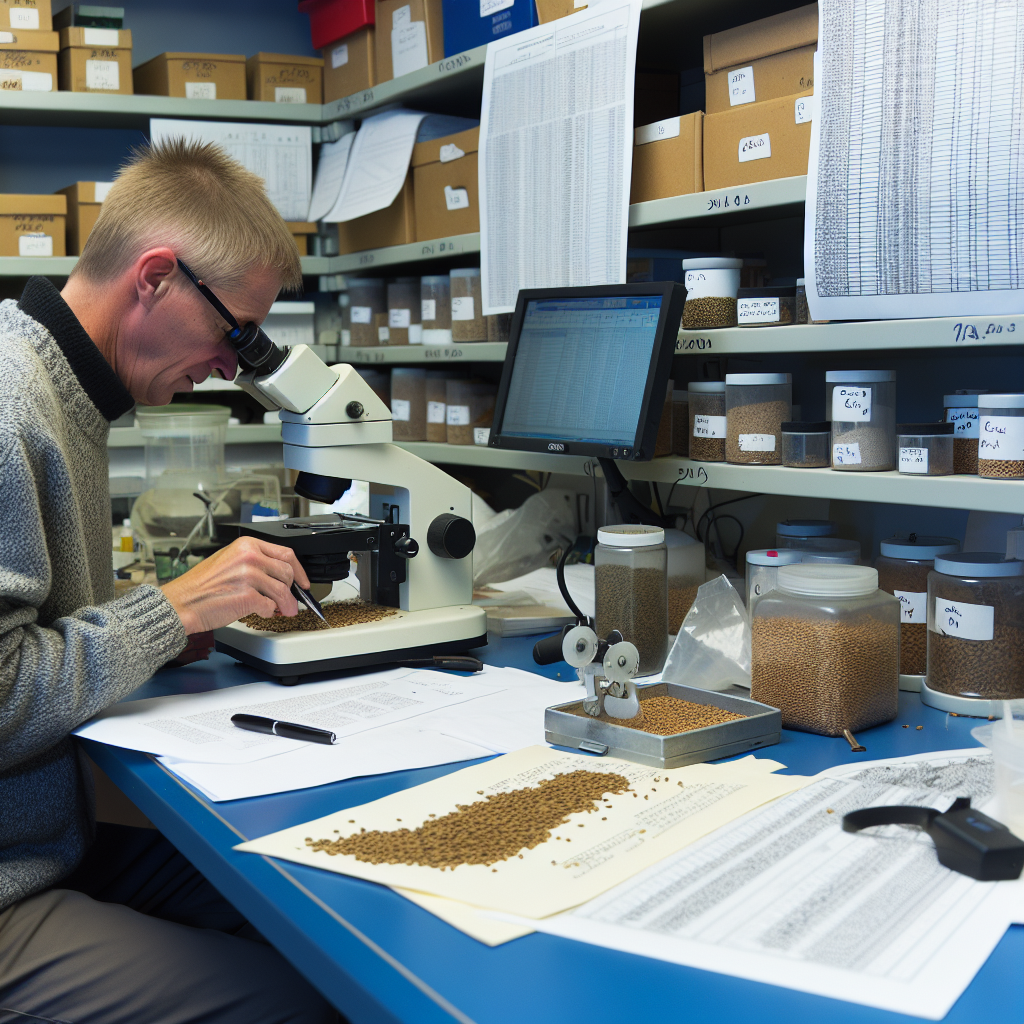
Safety Equipment and Protocols for Seed Technologists
Essential Personal Protective Equipment
Seed technologists must wear appropriate personal protective equipment.
This includes lab coats to protect against dust and contaminants.
Additionally, gloves prevent skin contact with potential irritants.
Safety goggles shield the eyes from splashes and airborne particles.
Air masks help in breathing safely when handling powders or chemicals.
Workplace Safety Protocols
Following workplace safety protocols is essential for seed technologists.
Always read safety data sheets for materials being used.
Proper labeling of all chemicals aids in identifying hazards.
Maintain a clean workspace to minimize risks of accidents.
Regularly inspect safety equipment to ensure it is functional.
Emergency Readiness
Seed technologists must be ready for any emergencies that may arise.
Establish clear evacuation routes for quick exits during emergencies.
Ensure fire extinguishers are accessible and regularly maintained.
First aid kits should be stocked and easily reachable.
Conduct regular drills to keep the team prepared for emergencies.
Training and Education
Ongoing training is crucial for all seed technologists.
Participate in safety workshops to keep skills up to date.
Understand the proper handling of hazardous materials through training.
Review safety protocols regularly to reinforce safe practices.
Encouragement of open discussions about safety builds a stronger culture.
Learn More: Why Sustainable Farming Is Key to Canada’s Economic Growth
Emerging Technologies in Seed Processing and Storage
Introduction to Innovations
New technologies continually shape seed processing and storage methods.
These innovations aim to enhance efficiency and sustainability in agriculture.
As a result, seed technologists can better meet global demands.
Advancements in Seed Processing
Automation plays a critical role in modern seed processing.
Robots and automated systems streamline labor-intensive tasks.
Moreover, precision agriculture technologies facilitate targeted inputs.
This optimizes seed treatment processes significantly.
Sorting and Cleaning Technologies
Advanced sorting machines use sensors for seed selection.
These devices can detect size, weight, and quality characteristics.
Additionally, air classifiers remove debris effectively from seeds.
Seed Treatment Innovations
Novel coating technologies enhance seed performance.
Some coatings protect seeds from pests and diseases.
Other treatments improve germination and vitality rates.
Storage Solutions for Seeds
Innovative storage solutions help maintain seed quality over time.
Controlled environment storage includes monitoring temperature and humidity.
This ensures optimal conditions for seed longevity.
Smart Storage Systems
IoT devices enable real-time monitoring of storage environments.
Moreover, these systems provide alerts for any deviations in conditions.
This proactive approach helps prevent spoilage and loss.
Eco-friendly Storage Materials
New materials designed for seed storage are more sustainable.
Biodegradable options reduce environmental impact during disposal.
Likewise, reusable containers promote a circular economy in agriculture.
Technological Impacts on Agriculture
Embracing these advancements fosters a more sustainable agricultural future.
Seed technologists must stay informed about new tools and methods.
This will ensure they remain competitive and effective in their work.
Best Practices in Maintenance and Calibration of Equipment
Regular Inspections
Seed technologists must conduct regular inspections of their equipment.
These inspections help to identify any potential issues early.
Schedule periodic checks to ensure everything is functioning properly.
Incorporating a checklist can streamline this process effectively.
Implementing Calibration Routines
Calibration routines should be established for all operational equipment.
This practice guarantees accurate and reliable measurements.
Utilize precise calibration standards according to manufacturer guidelines.
Document all calibration activities to maintain a clear history.
Cleaning and Maintenance Protocols
Clean all equipment regularly to prevent contamination of seeds.
Establish a maintenance schedule detailing cleaning frequencies.
Use appropriate cleaning agents to avoid damaging sensitive components.
Additionally, inspect parts for wear and tear during cleaning.
Training Personnel
Providing training is crucial for all staff members operating equipment.
Proper training enhances performance and reduces accidents.
Incorporate best practices into your training curriculum.
Furthermore, update training materials regularly to reflect new technologies.
Utilizing Technology for Monitoring
Employ technology to monitor equipment performance continuously.
Use software solutions that provide alerts for maintenance needs.
This proactive approach helps avoid unexpected breakdowns.
Integrating IoT devices can enhance monitoring capabilities.
Documenting Maintenance Activities
Maintain thorough documentation of all maintenance activities.
This documentation aids in tracking performance and compliance.
Include details such as dates, issues found, and corrective actions.
Consistent records also benefit audits and regulatory inspections.
Additional Resources
Equipment Needed for Planting and Maintaining Food Plots | Ohioline
The Many Uses of Nuclear Technology – World Nuclear Association

